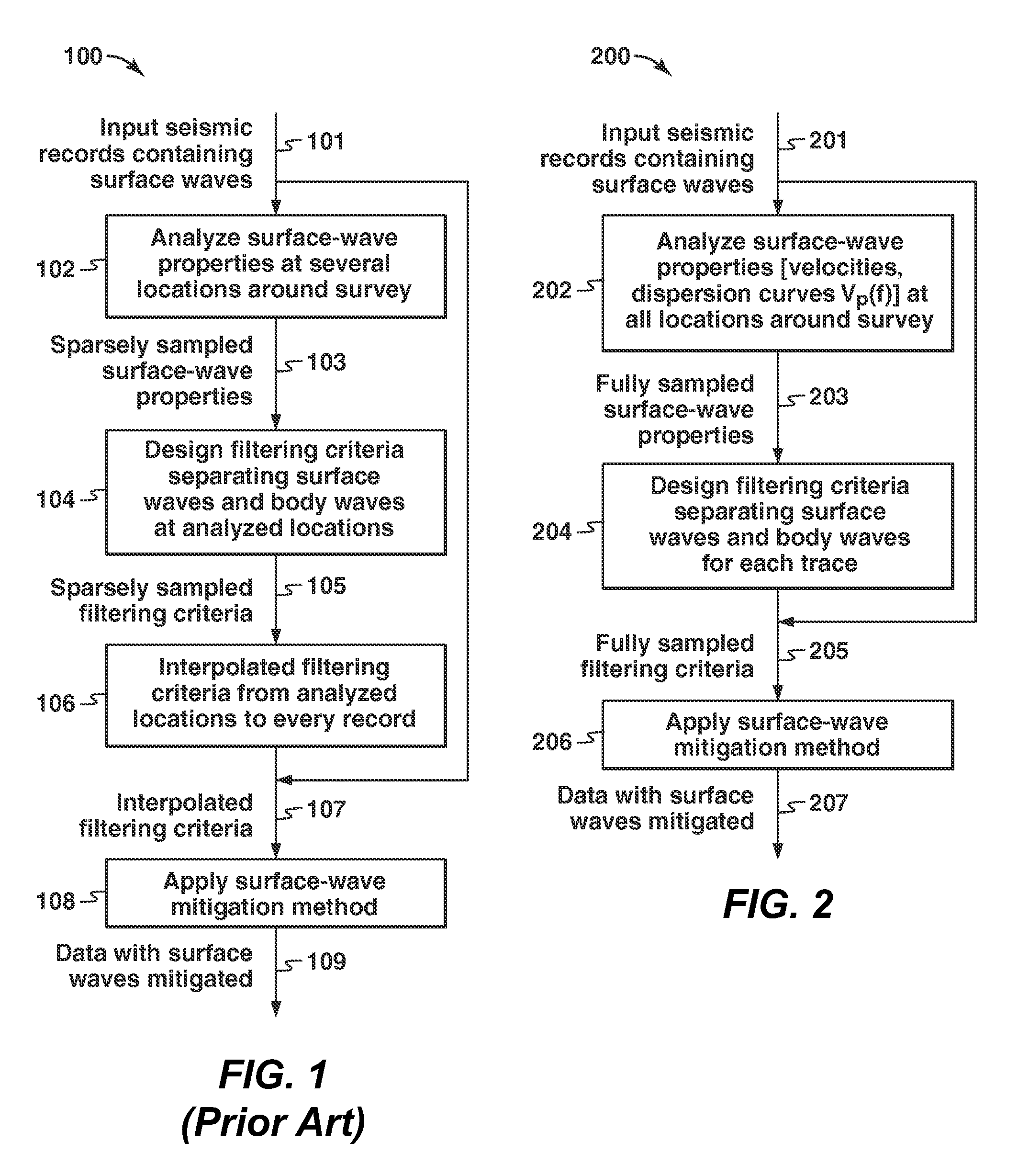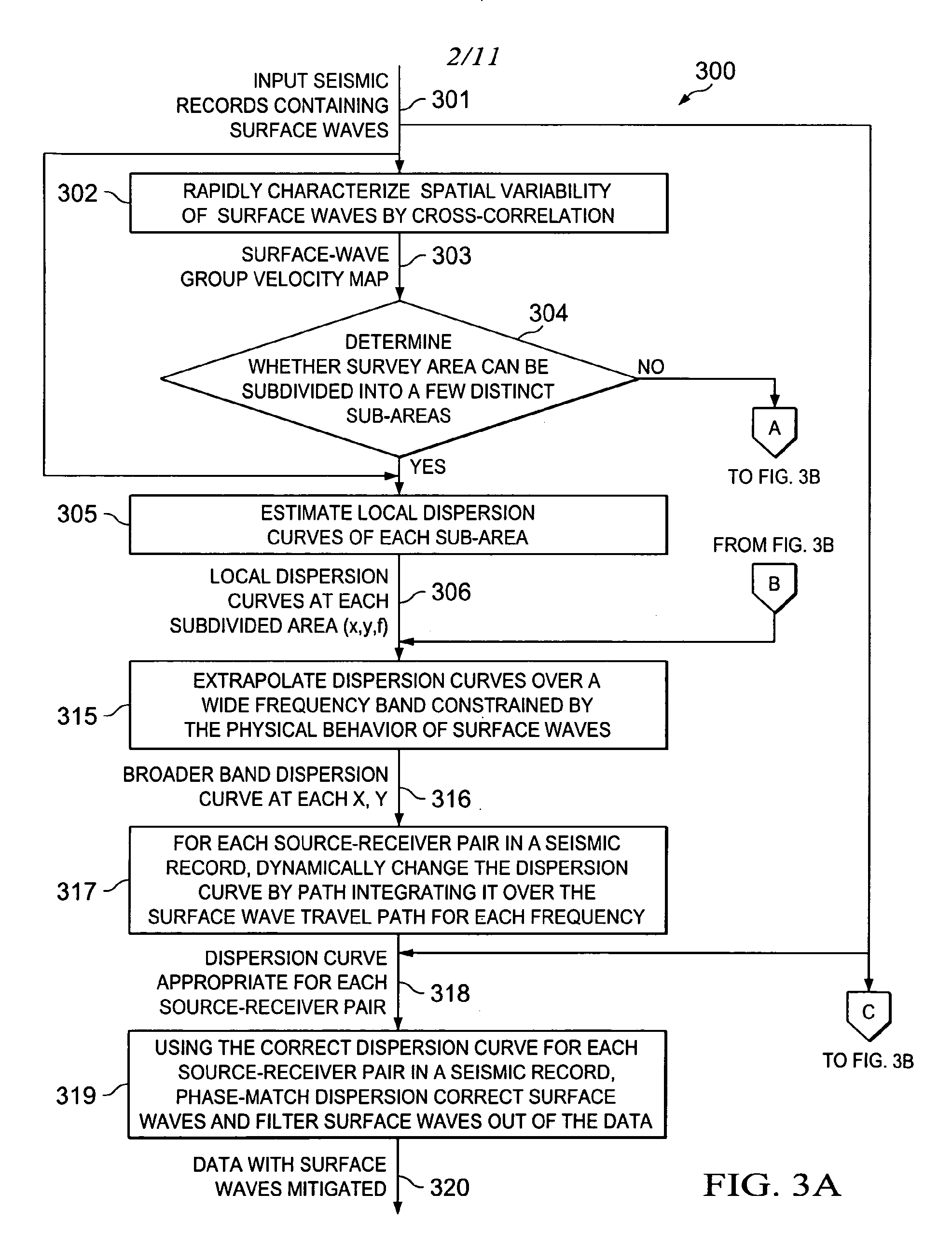Characterizing Spatial Variability of Surface Waves In Seismic Processing
a surface wave and spatial variability technology, applied in the field of processing seismic data, can solve the problems of difficult to remove reflector energy by classical fourier (or dip separation) methods, more recently developed radon methods, and more computational costs
- Summary
- Abstract
- Description
- Claims
- Application Information
AI Technical Summary
Problems solved by technology
Method used
Image
Examples
Embodiment Construction
[0039]Note that there is another limitation on Fourier methods, namely spatial variability of surface wave properties. This problem is observed in the prior art, and yet has not been dealt with. Separating surface waves from body waves requires a decision about the specific threshold for separation, namely at what velocity (or range of velocities) are the surface waves and body waves? Filtering requires setting these thresholds to optimally remove the noise. Deciding on these thresholds is typically performed by analyzing seismic records in the data, perhaps ones from different parts of a seismic survey. No matter how thorough an analysis is attempted, it is too labor intensive to manually identify these velocity thresholds on any but a small subset of the data. Furthermore, it is not apparent how these threshold estimates at different locations can be used for surface-wave mitigation, even if one performed thorough analysis over the entire survey area.
[0040]Typically, very little i...
PUM
 Login to View More
Login to View More Abstract
Description
Claims
Application Information
 Login to View More
Login to View More - R&D
- Intellectual Property
- Life Sciences
- Materials
- Tech Scout
- Unparalleled Data Quality
- Higher Quality Content
- 60% Fewer Hallucinations
Browse by: Latest US Patents, China's latest patents, Technical Efficacy Thesaurus, Application Domain, Technology Topic, Popular Technical Reports.
© 2025 PatSnap. All rights reserved.Legal|Privacy policy|Modern Slavery Act Transparency Statement|Sitemap|About US| Contact US: help@patsnap.com



